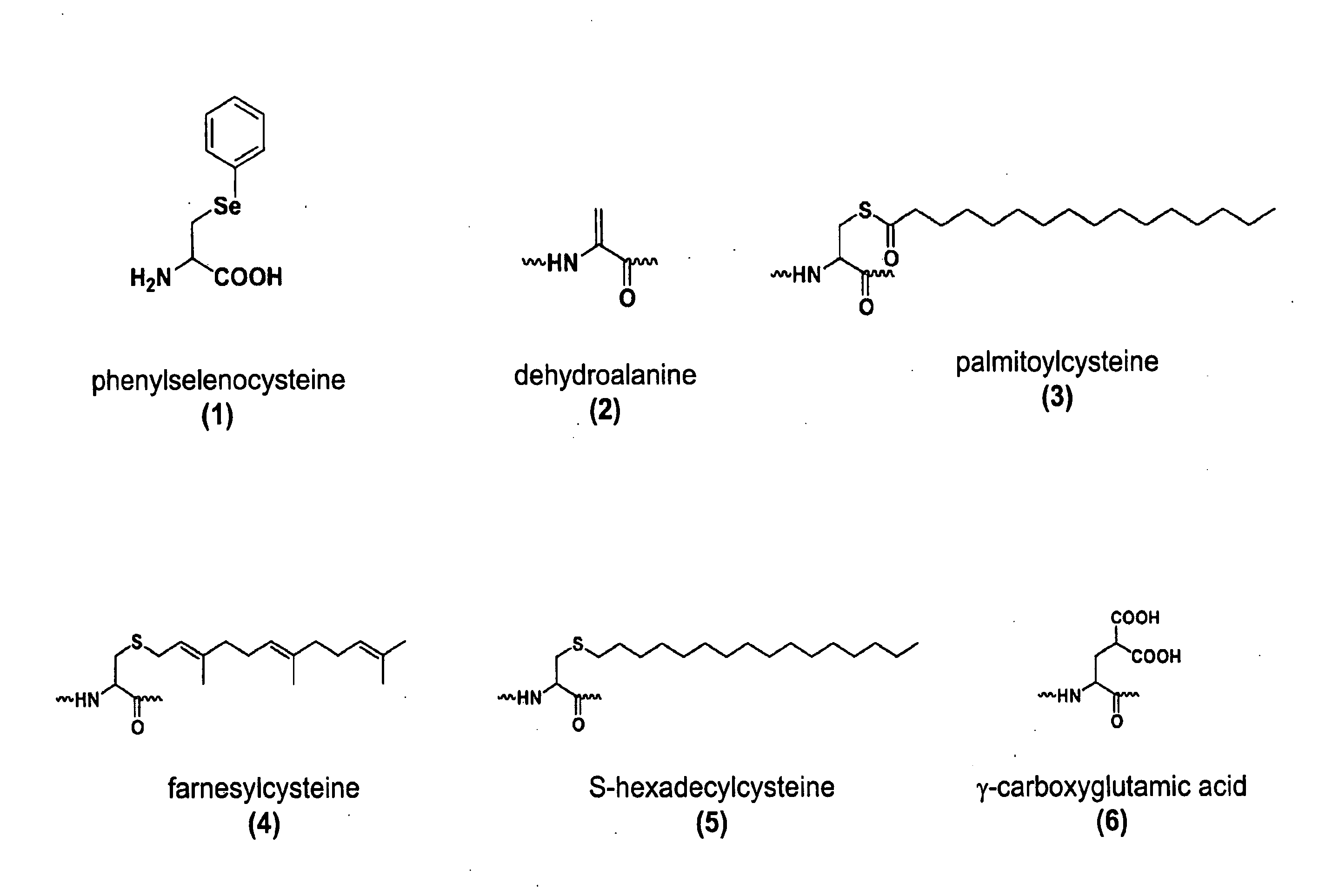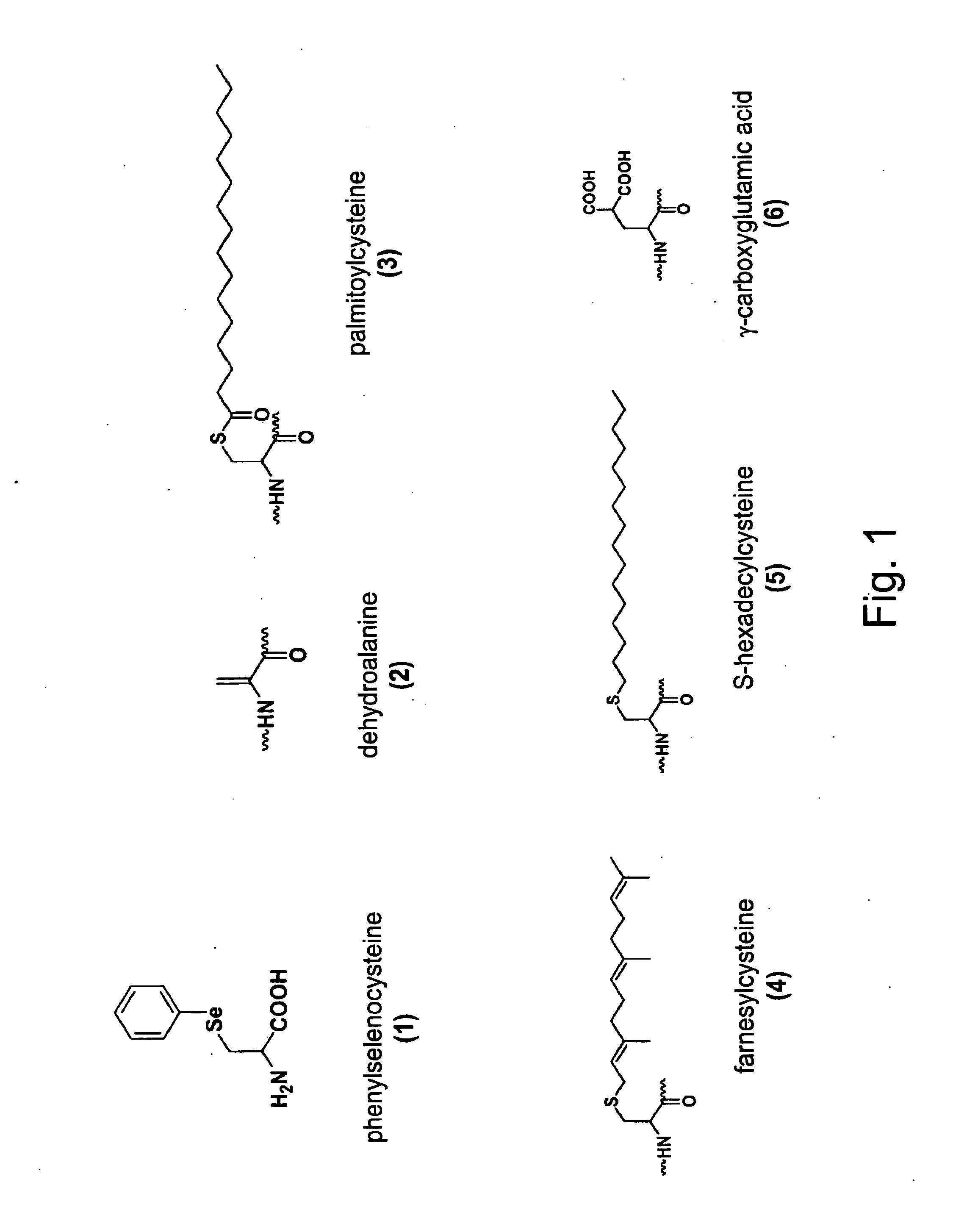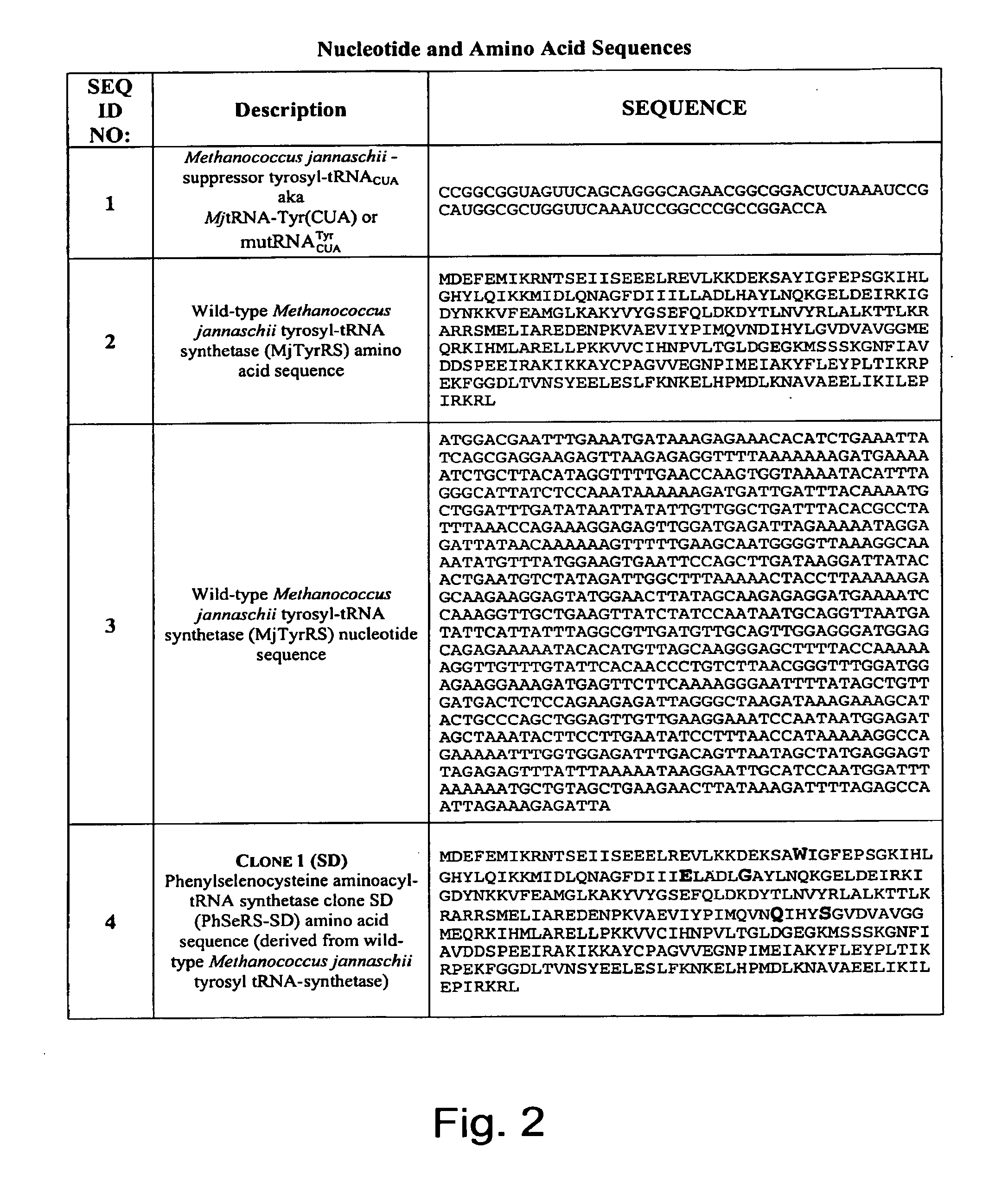Genetically Programmed Expression of Proteins
a gene and protein technology, applied in the field of translation biochemistry, can solve the problems of limited the ability to make highly targeted protein modifications, restrict the study of protein structure and function, and poor selectivity in the modification reaction
- Summary
- Abstract
- Description
- Claims
- Application Information
AI Technical Summary
Benefits of technology
Problems solved by technology
Method used
Image
Examples
examples
[0231]The following examples are offered to illustrate, but not to limit the claimed invention. One of skill will recognize a variety of non-critical parameters that may be altered without departing from the scope of the claimed invention. It is understood that the examples and embodiments described herein are for illustrative purposes only and that various modifications or changes in light thereof will be suggested to persons skilled in the art and are to be included within the spirit and purview of this application and scope of the appended claims.
example
Genetic Selection of Mutant Synthetases Specific for Phenylselenocysteine
Phenylselenocysteine Reactive Chemistry
[0232]Selenium is an essential element in both organic synthesis and biology. It has been demonstrated that a phenylseleno moiety can be oxidized in mild conditions, and spontaneous syn elimination of the selenoxide results in olefin formation. This strategy has been used extensively in total synthesis.
[0233]The incorporation of an unnatural amino acid containing selenium into proteins would create an attractive target for highly selective posttranslational modification of proteins, for example, to produce selectively lipidated proteins. One such unnatural seleno amino acid is phenylselenocysteine (CAS Registry Number 71128-82-0), synonymously termed phenylselenide or Se-Phenyl-L-selenocysteine. This structure is provided in FIG. 1, structure 1. This unnatural amino acid can be obtained, for example, from Sigma®-Aldrich® Co., Inc., catalog number 50827.
[0234]Oxidative clea...
PUM
| Property | Measurement | Unit |
|---|---|---|
| Tm | aaaaa | aaaaa |
| volume | aaaaa | aaaaa |
| structure | aaaaa | aaaaa |
Abstract
Description
Claims
Application Information
 Login to View More
Login to View More - R&D
- Intellectual Property
- Life Sciences
- Materials
- Tech Scout
- Unparalleled Data Quality
- Higher Quality Content
- 60% Fewer Hallucinations
Browse by: Latest US Patents, China's latest patents, Technical Efficacy Thesaurus, Application Domain, Technology Topic, Popular Technical Reports.
© 2025 PatSnap. All rights reserved.Legal|Privacy policy|Modern Slavery Act Transparency Statement|Sitemap|About US| Contact US: help@patsnap.com



